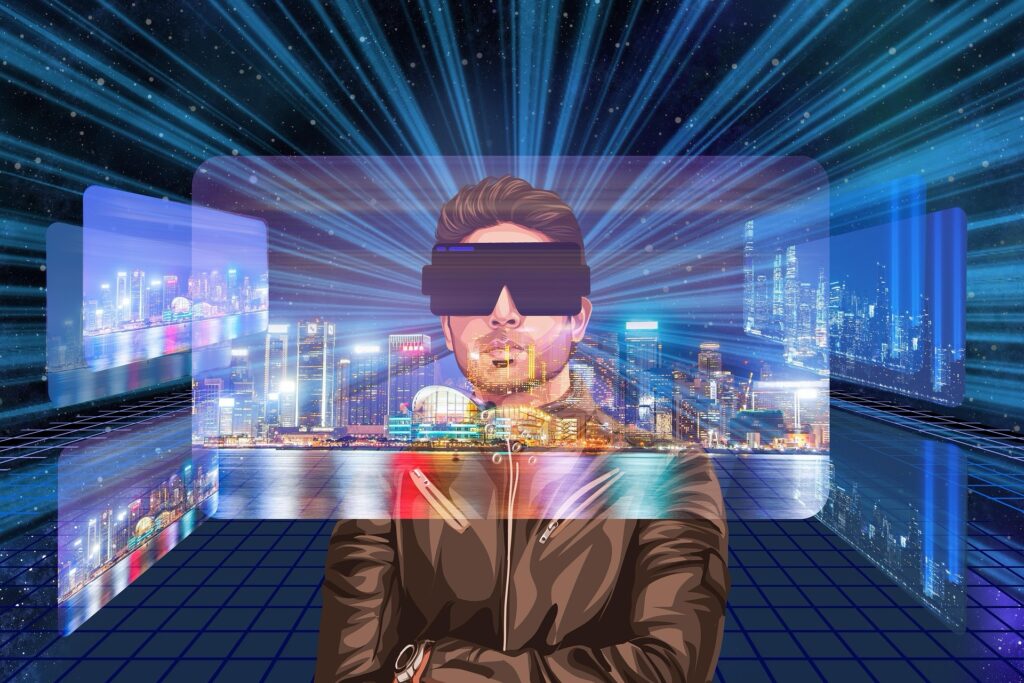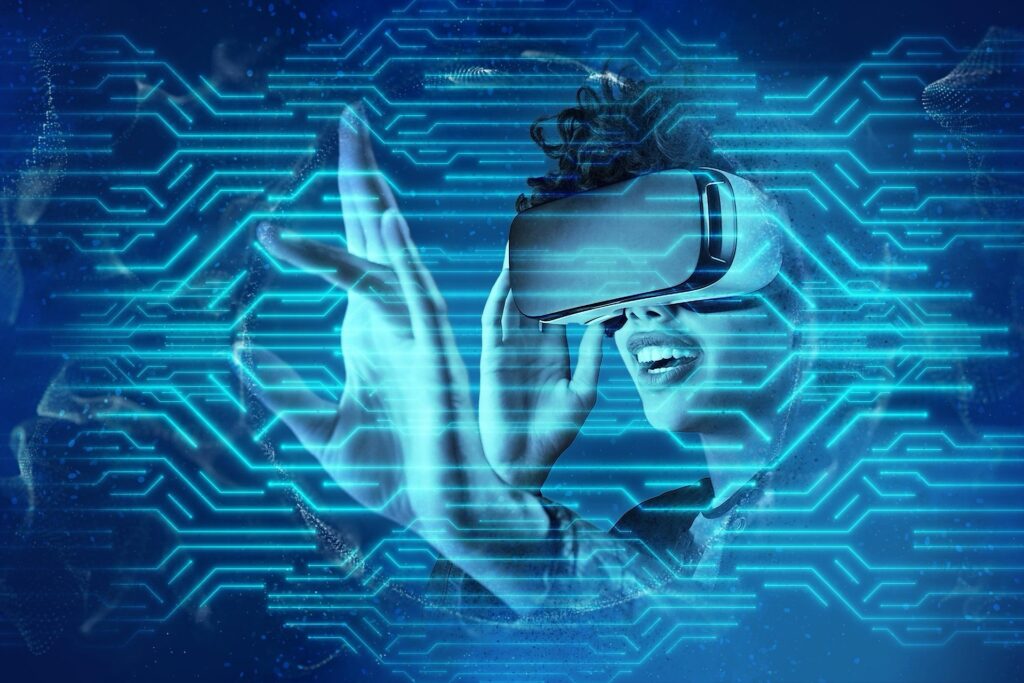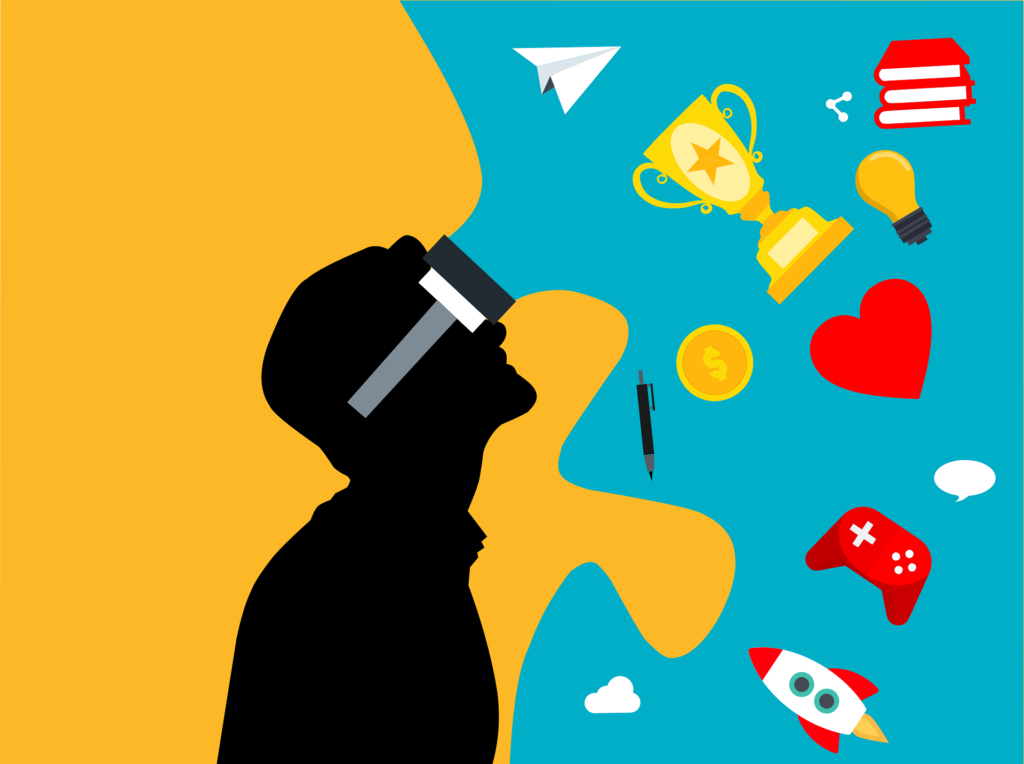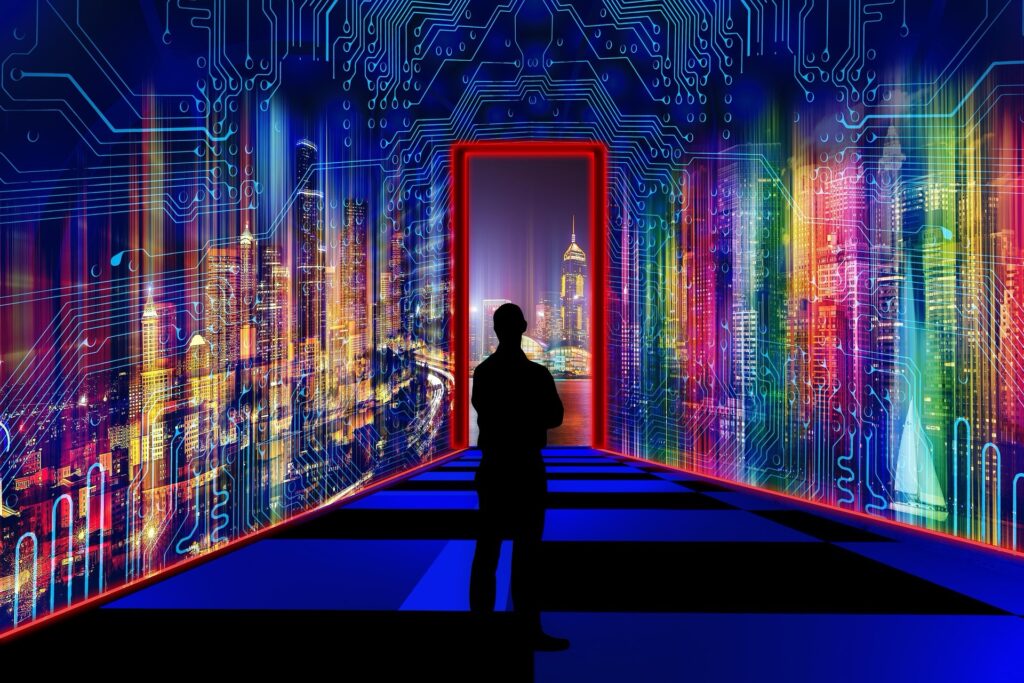
Introduction to Virtual Reality (VR)
Virtual Reality (VR) refers to a technology that immerses users in a fully simulated environment through the use of specialized hardware such as VR headsets, gloves, and other devices. Unlike augmented reality (AR), VR creates a completely immersive experience, often used for gaming, education, medical training, design, and entertainment. Over the past few years, VR has transitioned from a niche technology to a more widely adopted tool in various industries, with rapidly advancing applications in gaming, healthcare, military, and even art.
Technological Advancements Shaping VR’sFuture

1. Hardware Innovation
- Improved Headsets and Displays: Modern VRheadsets are becoming more comfortable, lightweight, and affordable. High-resolution displays, such as OLED and microLED, will offer more immersive experiences by enhancing visual clarity and reducing motion sickness.
- Eye Tracking and Foveated Rendering: Eye-tracking technology allows for more natural interactions and better performance. Foveated rendering optimizes graphic performance by reducing the rendering workload in peripheral vision areas, improving VRefficiency.
- Haptic Feedback and Tactile Devices: New haptictechnologies aim to make VR experiences more physically engaging, giving users tactile feedback when interacting with virtual environments. This can include gloves, suits, and even full-body systems.
2. Artificial Intelligence (AI) and Machine Learning
- Personalized VR Experiences: AI will enable VRsystems to adapt to individual users, learning their preferences and tailoring virtual environments accordingly. This could improve immersion by making the virtual space more responsive and intelligent.
- AI-Driven Characters and Interactions: In gaming and simulations, AI will make non-playable characters (NPCs) and virtual environments more realistic and reactive, enhancing user engagement.
3. 5G and Cloud Computing
- Low-Latency Experiences: 5G networks promise to offer ultra-low latency, which will significantly improve VR interactions, especially in online gaming and collaborative virtual spaces.
- Cloud-Based VR: With cloud computing, VRapplications will no longer be constrained by the limitations of local hardware. Cloud gaming and VRservices will provide users with access to high-quality VR content without the need for expensive local equipment.
Key Sectors Impacted by VR’s Future

1. Gaming and Entertainment
- The gaming industry is one of the primary drivers of VR technology. As VR hardware becomes more accessible, developers will create more immersive games and experiences, leading to an expansion of VR’s role in the entertainment industry. Multiplayer VR platforms may also emerge, making the virtual world more social and interactive.
- Virtual Cinemas and Concerts: VR could revolutionize entertainment by offering virtual reality theaters where users can watch movies or attend live performances remotely, offering a level of interactivity and immersion that traditional media cannot match.
2. Healthcare
- Medical Training: VR allows for realistic medical simulations, enabling doctors and surgeons to practice and learn without putting patients at risk. VR could also be used in rehabilitation, helping patients recover by providing engaging, interactive exercises in virtual environments.
- Telemedicine: VR can create virtual healthcare environments for remote consultations, where patients interact with healthcare providers in an immersive space, providing a more engaging and personal experience than traditional video calls.
3. Education and Training
- VR is being used to create interactive, immersive learning environments. From virtual classrooms to hands-on simulations in fields like engineering, aviation, or history, VR has the potential to transform how education is delivered. Students can engage with complex concepts in a way that enhances learning retention and understanding.
- Corporate Training: VR could replace traditional training programs with simulations that offer realistic scenarios. This is especially valuable in industries like manufacturing, defense, and emergency services, where real-world training can be expensive or dangerous.
4. Work and Collaboration
- Virtual Workspaces: The future of remote work may see an increased adoption of VR for virtual office spaces, where workers can meet and collaborate as avatars in a shared, 3D virtual environment. This creates a sense of presence and connection that traditional video conferencing lacks.
- Collaborative VR Platforms: Tools such as virtual whiteboards, meeting rooms, and design platforms will allow teams to collaborate in immersive environments, enhancing productivity and teamwork.
5. Social Interaction and the Metaverse
- The Metaverse is often seen as the future of virtual social interaction. It refers to interconnected virtual worlds where users can work, play, socialize, and interact in an immersive 3D space. Platforms like Meta’s Horizon Worlds, Decentraland, and others are attempting to build a persistent, shared universe where people can live a part of their lives digitally.
- Virtual Communities and Social Spaces: As VRtechnology advances, more people will be able to experience social interactions in virtual spaces, creating more inclusive environments for people who might have difficulty socializing in the real world due to physical or social barriers.
Challenges and Barriers to Widespread Adoption

1. CostandAccessibility
Despite improvements, VR hardware remains expensive for many users, particularly in high-end applications. The costs of high-resolution headsets, powerful computers, and additional accessories still place VR out of reach for a significant portion of the population.
2. Health and Safety Concerns
- Motion Sickness: One of the major issues with VR is the risk of motion sickness, which occurs when the brain perceives a disconnect between the virtual environment and real-world movement. While advancements in technology, such as improved frame rates and motion tracking, help alleviate this issue, it remains a challenge for some users.
- Physical Discomfort: Long VR sessions can cause physical strain, particularly on the eyes and neck. Addressing these ergonomic concerns will be key to the long-term success of VR adoption.
- Mental Health Concerns: Prolonged VR use may contribute to issues like social isolation, disorientation, and a detachment from reality. VR developers and users alike will need to be mindful of these potential consequences.
3. Ethical and Privacy Concerns
- As VR becomes more integrated with personal data, privacy issues could arise. Tracking users’ physical movements, biometric data (such as eye-tracking), and behavioral patterns could lead to concerns over data security and surveillance.
- Addiction and Escapism: The immersive nature of VR may lead some users to become overly dependent on virtual worlds, leading to addiction or detachment from real-world responsibilities. Ensuring balance and healthy use of VR technology is crucial.
The Vision for the Future of VR

Looking ahead, the future of virtual reality will be shaped by both technological progress and societal adaptation. Some potential future scenarios include:
- Full-Body Immersion: VR could evolve to create experiences where the entire body is immersed, using more sophisticated haptic systems, motion capture suits, and other technologies that allow for realistic physical interaction in virtual spaces.
- Hyper-Reality Experiences: We may see VR integrated with other sensory technologies (such as scent or taste) to create fully immersive “hyper-reality” experiences. This could transform industries such as tourism, entertainment, and food.
- Expansion of the Metaverse: The growth of the metaverse, a digital world where people interact in virtual environments, could change the way we socialize, work, and even live. Over time, the metaverse could become a dominant part of daily life, offering a new realm for human interaction, creativity, and economic activity.
Read also: Level Up Reality: How AI is Shaping the Future of Gaming for You
Conclusion
The future of virtual reality is filled with immense possibilities, from revolutionizing industries such as gaming, healthcare, education, and entertainment to reshaping the way people socialize and work. As VR technology continues to evolve, so too will the experiences it offers, becoming more immersive, realistic, and integral to daily life. However, for VR to reach its full potential, challenges in hardware affordability, safety, privacy, and societal impacts must be addressed. In the coming years, VR could profoundly change how people interact with digital environments and each other, marking the dawn of a new era of immersive technology.
Buy Now
Quantum Computing for Computer Scientists

